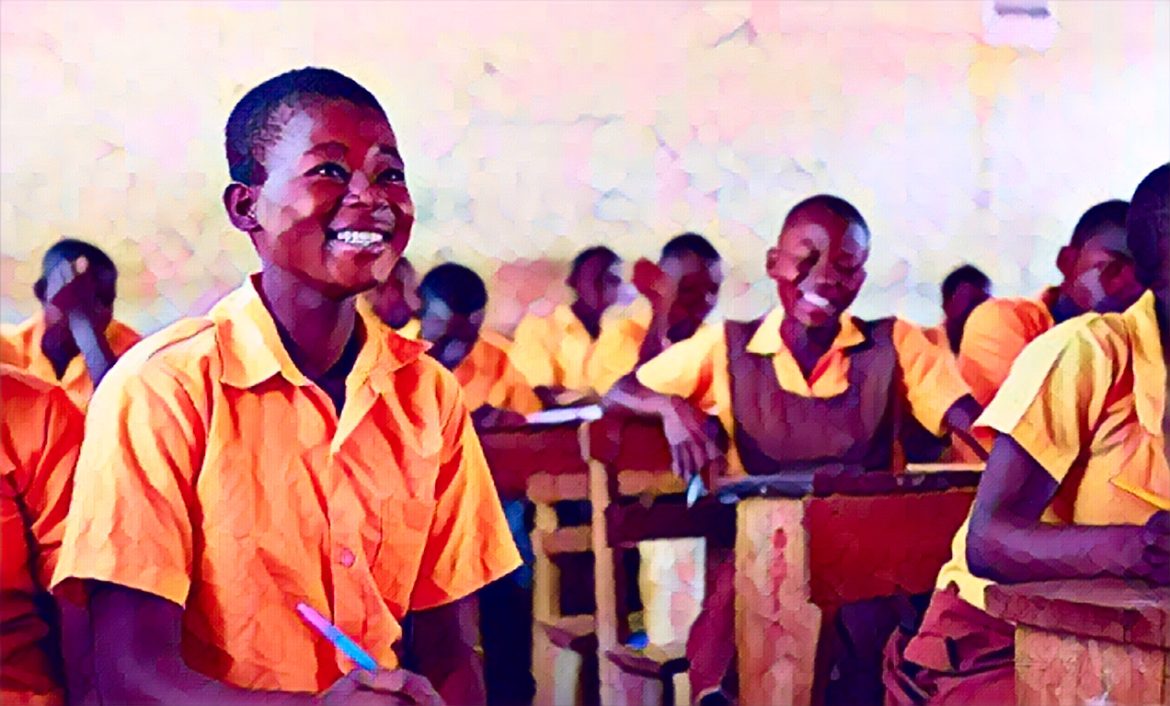KEY POINTS
- Ghana’s Free SHS policy has boosted access for 1.2 million students.
- Rural education faces deficits in resources, infrastructure, and teacher quality.
- Partnerships target inclusive education and digital learning for improved outcomes.
Since independence, Ghana’s education system has had substantial advancements, characterised by policies aimed at improving access and quality. Nonetheless, obstacles including infrastructural deficiencies, disparities, and quality shortcomings endure.
Educational access: Advancements and ongoing disparities
Ghana has made significant progress in enhancing educational accessibility throughout the years. The Free Compulsory Universal Basic Education (FCUBE) initiative, initiated in the 1990s, eliminated certain budgetary obstacles at the primary education level.
The Free Senior High School (SHS) program, launched in 2017, has expanded access, benefiting nearly 1.2 million pupils by 2020 ([UNICEF, 2020](https://www.unicef.org/ghana/education)).
Notwithstanding these improvements, disparities persist, especially in rural regions where educational institutions are overloaded and inadequately equipped.
Educational quality: Accomplishments and opportunities for enhancement
Although access has been enhanced, the quality of education remains deficient. The Education Strategic Plan 2018–2030 prioritises the enhancement of teaching and learning standards; yet, results continue to be unsatisfactory. A significant number of pupils do not achieve fundamental literacy and numeracy skills by the conclusion of primary education.
The quality and distribution of teachers pose significant issues. Rural schools frequently encounter difficulties in recruiting suitable educators, resulting in discrepancies in educational outcomes between urban and rural regions.
Teacher training programs and professional development activities have been established but necessitate further focus on retention and equitable placement.
The availability of resources constitutes an additional obstacle. Numerous educational institutions are deficient in essential infrastructure, texts, and ICT resources required for the provision of contemporary education. Inclusive education for children with impairments is inadequately developed, underscoring the necessity for teacher training and adapted learning environments.
Obstacles and solutions
According to the World Bank Group, economic limitations profoundly affect Ghana’s educational system. Although 23% of the national budget was designated for education in 2020, budgetary constraints hinder infrastructure development and program sustainability).
Regional disparities persist as a significant concern, with the three northern regions exhibiting worse enrolment and performance relative to regions such as Greater Accra.
The government has collaborated with international organizations to tackle these challenges. The World Bank-supported Secondary Education Improvement Project has provided quality education to over 568,000 students and granted scholarships to more than 20,000 disadvantaged students, 60% of whom are female
Moreover, UNICEF’s Data-Driven Decision-Making initiative has implemented evidence-based strategies to improve student outcomes.
Conclusion: A strategic direction
Ghana has shown dedication to enhancing its education system; nonetheless, attaining equity and quality necessitates ongoing effort. Investments in infrastructure, educator development, and inclusive education are essential. Cooperation among the government, NGOs, and international partners is crucial for establishing a strong and fair education system that addresses the needs of all Ghanaian students.





33 comments
Plunge into the expansive sandbox of EVE Online. Forge your empire today. Fight alongside millions of pilots worldwide. Begin your journey
https://stroyexpertsochi.ru/ Посетите наш сайт и узнайте о фундаменте, дренажных системах и сейсмоустойчивых технологиях.
энергоэффективные окна и двери Сочи Выбирайте энергоэффективные окна и двери Сочи и гарантируйте экономию тепла.
https://www.stroyexpertsochi.ru Откройте материалы и узнайте о террасировании участка, геопластике и оптимальном использовании пространства.
stroyexpertsochi.ru Узнайте о наши материалы и узнайте о способах энергоэффективного обустройства коттеджей и частных домов.
stroyexpertsochi.ru/ Просмотрите портфолио объектов и узнайте о защите стен от грибка и антикоррозийной обработке металлоконструкций.
ландшафтный дизайн с террасированием Сочи Применяйте ландшафтный дизайн с террасированием Сочи и обеспечьте гармонию участка.
stroyexpertsochi.ru/ Откройте портфолио объектов и ознакомьтесь с эффективными дренажными системами и укреплением склона.
stroyexpertsochi.ru Погрузитесь в наши материалы и узнайте о способах энергоэффективного обустройства коттеджей и частных домов.
stroyexpertsochi.ru/ Исследуйте портфолио объектов и узнайте о методах строительства дома в Сочи и Краснодарском крае).
I read this article fully concerning the comparison of most
recent and preceding technologies, it’s amazing article.
Hello! This post could not be written any better! Reading through this
post reminds me of my previous room mate! He always kept talking about this.
I will forward this write-up to him. Fairly certain he will have a good read.
Thank you for sharing!
Heya terrific website! Does running a blog such as
this require a large amount of work? I have very little expertise
in computer programming but I had been hoping to start my own blog soon. Anyway, if you have
any suggestions or techniques for new blog
owners please share. I know this is off subject however I simply
wanted to ask. Thanks a lot!
Remarkable! Its really remarkable article, I have got much clear idea on the topic of from this article.
I read this piece of writing completely about the difference of most recent and preceding technologies, it’s remarkable article.
I’m amazed, I must say. Rarely do I come across a blog that’s
both educative and amusing, and without a doubt, you have hit the nail on the head.
The problem is something that not enough people are speaking
intelligently about. Now i’m very happy I stumbled across this during
my hunt for something relating to this.
Ahaa, its pleasant discussion concerning this
paragraph here at this webpage, I have read all that, so now me also commenting
at this place.
Spot on with this write-up, I really believe
that this web site needs much more attention. I’ll probably be returning to
read more, thanks for the info!
I really like what you guys are usually up too.
This sort of clever work and exposure! Keep up the fantastic works
guys I’ve included you guys to my blogroll.
I am really pleased to glance at this website posts which carries lots
of valuable data, thanks for providing these statistics.
This is the perfect web site for everyone who wants to understand this topic.
You realize so much its almost hard to argue with you (not that I personally will need to…HaHa).
You certainly put a new spin on a subject that has been discussed for decades.
Excellent stuff, just great!
Somebody necessarily assist to make significantly
posts I’d state. That is the very first time I frequented your website page and thus far?
I surprised with the research you made to make this actual submit amazing.
Magnificent activity!
This site certainly has all of the information I needed about
this subject and didn’t know who to ask.
It’s actually very complex in this busy life to listen news on TV, so I just use world wide web for that reason, and get the newest news. http://www.ifashionstyles.com
Thanks , I’ve just been looking for information approximately this topic for a while and yours is the greatest I’ve found out so far. But, what about the conclusion? Are you certain about the supply?
Heya this is kinda of off topic but I was wanting to know if blogs use WYSIWYG editors or if you have to manually code with HTML. I’m starting a blog soon but have no coding know-how so I wanted to get guidance from someone with experience. Any help would be enormously appreciated!
I’m really enjoying the design and layout of your website.It’s a very easy on the eyes which makes it much more pleasant for me to come here and visit more often. Did you hire out a developer to create your theme? http://www.hairstylesvip.com
Attractive portion of content. I simply stumbled upon your web site and in accession capital to say that
I acquire actually loved account your blog posts.
Anyway I will be subscribing on your augment or even I fulfillment you get right of
entry to consistently quickly.
Feel free to visit my blog: check out this site
This design is steller! You most certainly know how to keep a reader amused.
Between your wit and your videos, I was almost
moved to start my own blog (well, almost…HaHa!) Wonderful job.
I really loved what you had to say, and more than that, how you presented it.
Too cool!
Here is my page more tips here
My brother suggested I would possibly like this web site.
He used to be entirely right. This put up truly made my day.
You cann’t believe simply how a lot time I had spent for this
info! Thanks!
Also visit my blog … continue reading
What you posted made a lot of sense. However, think about this, what if you added a
little content? I ain’t saying your content is not good.,
however suppose you added a title that grabbed folk’s attention? I mean Ghana’s Education System: Opportunities, Challenges, and the Quest for Quality is a little boring.
You should look at Yahoo’s front page and see how they create article
headlines to get viewers to click. You might try
adding a video or a related picture or two to grab readers interested about what you’ve got to say.
Just my opinion, it could bring your website a little livelier.
Also visit my web-site yoururl.com
This piece of writing will assist the internet people for setting up new webpage
or even a blog from start to end.
Also visit my web site; browse around here
Hi, There’s no doubt that your website might be having web
browser compatibility issues. When I look at your website in Safari, it looks
fine but when opening in I.E., it has some overlapping issues.
I simply wanted to give you a quick heads up! Apart from that,
fantastic blog!
My blog website link